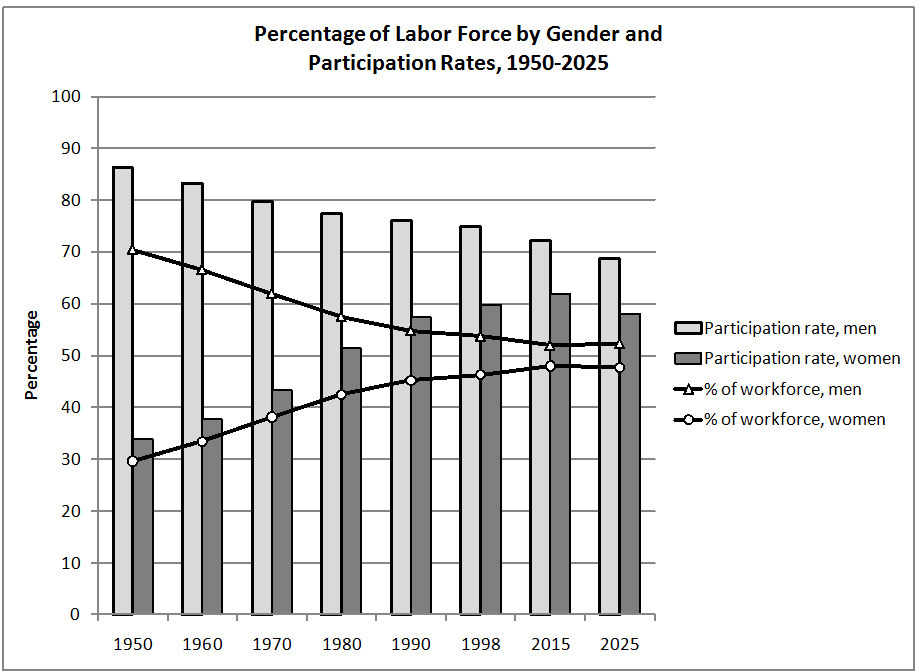
Apprenticeships are programs in which employers provide on-the-job mentored training to apprentices, employees who receive related technical and academic instruction at community colleges, technical schools or apprenticeship training programs. Businesses may also provide instruction online and on the job site. Apprentices receive wages that increase as more knowledge and skills are attained. The average starting wage for apprentices in programs registered with the U.S. Department of Labor is $15 an hour. Apprenticeships last between one and six years depending on the type of occupation and the amount of training needed. Graduates receive nationally-recognized industry credentials and in many cases college credit that can be used toward an associate or bachelor’s degree.
Apprenticeships are used to train workers in a variety of industries. Most apprentices work in the construction sector, 166,629, followed by public administration (19,447), manufacturing (15,630), transportation and warehousing (12,335), and utilities (7,281). Electrician is the most popular occupation. Nearly 44,000 apprentices trained to work in this field in 2018. Carpenter (25,921), construction craft laborer (15,612), plumber (14,471), and heavy truck driver (11,410) round out the top 5 apprenticeship occupations.
The expansion of apprenticeship program availability has been signature policies of both former President Barack Obama and current President Donald Trump. However, apprenticeships have yet to win over many parents and educators. While some see apprenticeships as an alternative pathway to a lifelong, well-paying career, especially for students who learn better by doing or those who do not want to take on staggering debt, others see it as a lower-level pathway to employment that will create a two-tier class system: those who can afford to will go to elite colleges and obtain white-collar careers while lower-income students will be discouraged from going to college while encouraged to apprentice in blue-collar professions. Many parents and educators believe that the only way students, especially low-income students, can obtain a high-paying, secure career is through, at minimum, a 4-year college degree.
Today’s market size shows the number of people that were participating in registered apprenticeship programs in the United States in 2013 and 2019.1 Not all apprenticeship programs are registered with the Federal government, however. Some experts estimate that there were about one million apprentices in 2019, one-twentieth the number of those enrolled in colleges and universities. In 2018 there were a total of 23,441 apprenticeship programs registered with the U.S. Department of Labor, 3,229 of which were new programs. This was the highest number of new programs in at least 10 years. According to the U.S. Department of Labor, in the past two years, more than 700 new programs have been created in fields such as cybersecurity, financial services, information technology, healthcare, and other white-collar industries. Overall in 2018, California had the most apprentices, 89,949, followed by South Carolina (20,763), Michigan (20,576), Ohio (19,081), and New York (18,337).1 Excludes the United Services Military Apprenticeship Program, which had 98,435 apprentices in 2018.
Geographic reference: United States
Year: 2013 and 2019
Market size: 375,000 and 633,625, respectively
Sources: Farah Stockman, “Want a White-Collar Career Without College Debt? Become an Apprentice,” The Denver Post, December 29, 2019, pp. 1K, 6K; “Apprenticeship Toolkit: Frequently Asked Questions,” U.S. Department of Labor available online here; “Data and Statistics,” U.S. Department of Labor, Employment and Training Administration available online here.
Image source: Gerd Altmann, “dream-job-application-location-job-2904780,” Pixabay, November 1, 2017 available online here.

 Collaborative robots, or co-bots, are robots that work alongside human workers. Many workers are wary of the increased use of robots in general, fearing the loss of their jobs. M.I.T. and Boston University estimated that up to six people lose their jobs for each robot per 1,000 workers a company adds. Employers, however, cite increased productivity, cost savings, and healthier work environments when robots are used in the workplace. Robots can work in hazardous jobs or do repetitive tasks thereby reducing worker injuries.
Collaborative robots, or co-bots, are robots that work alongside human workers. Many workers are wary of the increased use of robots in general, fearing the loss of their jobs. M.I.T. and Boston University estimated that up to six people lose their jobs for each robot per 1,000 workers a company adds. Employers, however, cite increased productivity, cost savings, and healthier work environments when robots are used in the workplace. Robots can work in hazardous jobs or do repetitive tasks thereby reducing worker injuries. According to the survey, Freelancing in America: 2016, commissioned by UpWork in partnership with Freelancers Union, 35% of the workforce—55 million people—in the United States were freelancers in 2016. As of June 2017, there were at least 79 active employment websites for freelancers. Employers post jobs they would like to outsource and freelancers apply for or bid on the work. Many of these jobs are temporary, an employer wanting to outsource a particular project for example. Most of the jobs listed on these sites allow the worker to work remotely.
According to the survey, Freelancing in America: 2016, commissioned by UpWork in partnership with Freelancers Union, 35% of the workforce—55 million people—in the United States were freelancers in 2016. As of June 2017, there were at least 79 active employment websites for freelancers. Employers post jobs they would like to outsource and freelancers apply for or bid on the work. Many of these jobs are temporary, an employer wanting to outsource a particular project for example. Most of the jobs listed on these sites allow the worker to work remotely. 

